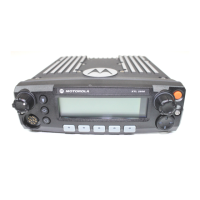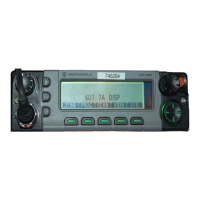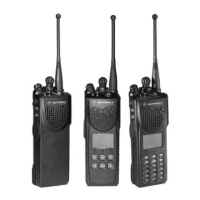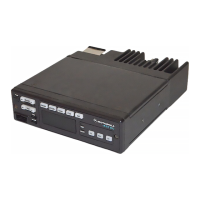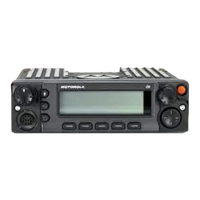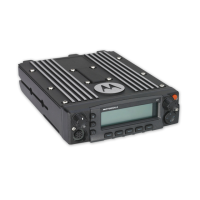June 11, 2003 6881096C73-O
9-4 Basic Troubleshooting: Introduction
9.1.3 Microphone Bias
Most microphones are powered by a phantom power supply. This means that the bias to the
electronics within the microphone is supplied as DC (direct-coupled) down the MIC_IN line. During
PTT (push-to-talk or transmit), the microphone electronics are connected to this line and loads it
down from 9 V to a bias voltage between about 3 to 6 volts. The AC load (or load line) is less than
560 ohms at the radio due to AC decoupling on both sides of this resistor. Audio (which is AC) from
the microphone passes up the same MIC_IN line and AC coupled eventually to a high impedance
amplifier circuit. It is imperative that this input has a bias voltage between 1.5 and 9.5 volts.
Connecting to anything other than a microphone could short out or clamp the input signal resulting in
distortion. The output of other types of electronics is typically referenced to zero volts DC and would
require a 10 µF capacitor to be placed in series with MIC_IN. If the capacitor is polarized, the plus
lead goes to the radio MIC_IN. Some audio generators have the option of applying the 1.5 Vdc
offset, which may be used in place of a capacitor.
5UARTA_RxD
5.5 K 0.00
6 USB -
0.50 0.09
7 USB +
0.51 0.07
8 RESET
0.51 0.00
9 BUSY
0.50 0.00
10 UARTA_CTS
High Z 9.20
11 UARTA_RTS
5.5 K 0.00
12 USB_PWR
0.7 0.00
13 CHAN_ACT
10.03
14 Ground
00.00
15 Emergency
59 K 1.90
16 PTT
0.8 2.80
17 One wire
0.7 2.80
18 VIP OUT 1 (12V)
10.08
19 VIP OUT 2 (12V)
10.07
20 Spkr +
0.8 6.60
21 RX_FILT_audio
11.30
22 Monitor
0.8 2.80
23 AUX_MIC
19.13
24 SW_B+
0.7 13.7
25 Ignition
0.8 13.8
26 Spkr -
0.8 6.70
* Measured without power applied to the radio, the DMM on the diode-test scale, and the
lead connected to chassis ground. 0.7 V, 0.8 V. and 1 V measurement represent diode
junctions that will vary depending on the bias current of the ohmmeter.
** Measured with a voltmeter and the radio powered on using a 13.8-volt power supply.
Table 9-2. Normal Operation Range and ESD Clamping Voltages (Continued)
'%
3LQV
)HPDOH
5HYHUVH%LDV
VROWDJHDW3RUW-*
9ROWDJHDW3RUW-**

